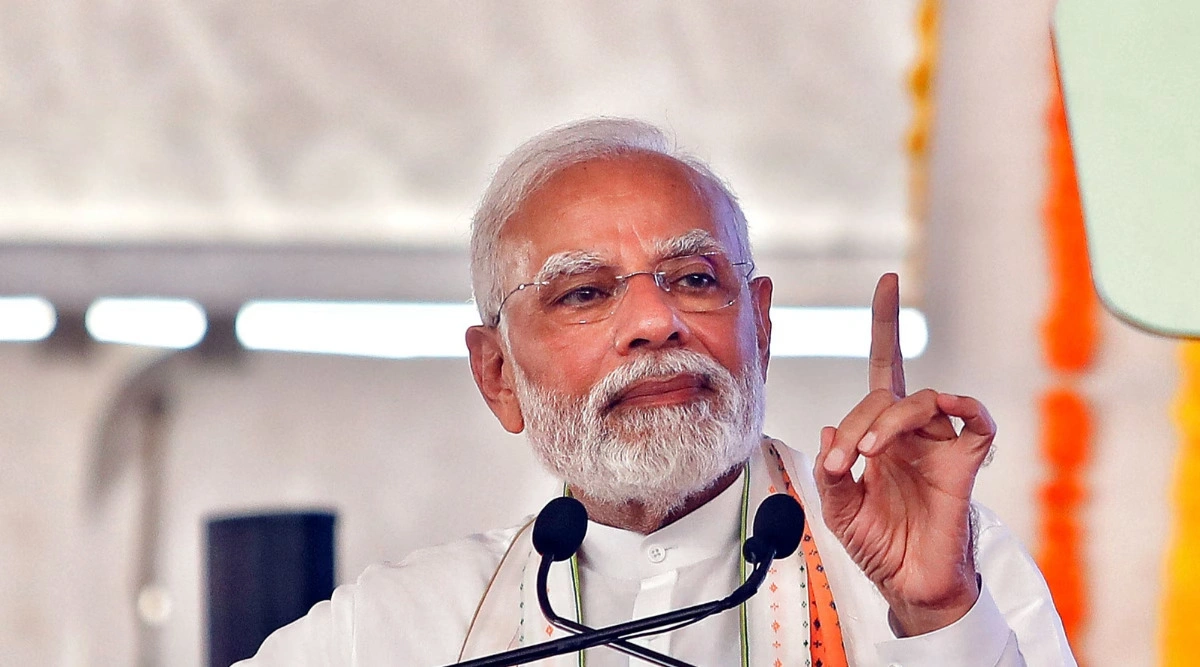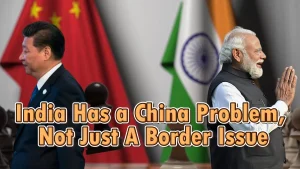Popular Narrative of India Replacing China as a Manufacturing Hub Falls Short of the Reality

Over the past decade, India’s economic expansion under Prime Minister Narendra Modi has been widely touted as a success story. Projections suggest that by 2027, India could surpass Germany and Japan to become the world’s third-largest economy by GDP. Numerous analysts have been quick to position India as the next major hub for global industrial and supply chains, often portraying it as an alternative to China.
But, a deeper dive into India’s economic data reveals a more nuanced picture. The country’s growth over the past 10 years has been disproportionately driven by financial services, real estate, and digital industries — while manufacturing, the sector that underpins sustainable industrial development, has steadily declined in its relative importance. The much-publicized “Make in India” initiative remains largely aspirational rather than a reflection of the economic realities on the ground.
This divergence between perception and performance underscores the need for a more measured view of India’s economic prospects. While the country has made strides in infrastructure development, long-term structural risks remain — chief among them, a reliance on foreign capital and an escalating debt burden. Investors and policymakers alike should take a pragmatic approach: neither underestimating nor overestimating India’s economic potential, but rather adjusting investment strategies and trade policies according to what’s really happening in the country.
The real drivers of India’s economic expansion have been service-related sectors. India’s economic growth has been largely fueled by services rather than industrial production. Between the third quarter of 2014 and the fourth quarter of 2024, the two largest contributors to GDP expansion were financial services, real estate and professional services, which accounted for 26.13 percent of growth. Trade, hotels, transport, communications and broadcasting contribute 23.56 percent. Together, these service-driven sectors made up nearly 50 percent of India’s GDP growth, whereas manufacturing contributed just 14.21 percent.
This reliance on services has led to persistent weaknesses — job creation has lagged, exports remain sluggish, and the trade deficit continues to widen. Without a stronger manufacturing base, India risks missing the kind of economic takeoff that helped East Asian economies sustain double-digit GDP growth during their peak development phases.
Despite the Modi administration’s high-sounding rhetoric on industrial expansion, manufacturing’s role in India’s economy has actually diminished. Before Modi took office, manufacturing accounted for 16.26 percent of the GDP. Under Modi, that figure dropped to 14.21 percent. Additionally, manufacturing’s share of GDP has continued to decline, to 12.84 percent in 2023, the lowest level since 1960. Meanwhile, services have surged to a record 49.8 percent of GDP.
In contrast, other emerging economies with similar economic outlook have seen manufacturing gain ground. Bangladesh’s manufacturing share of GDP rose from 16.61 percent in 2014 to 22.34 percent in 2023. In Vietnam, it increased from 20.37 percent to 23.88 percent over the same period. These trends suggest that while India has aggressively promoted its brand of manufacturing potential abroad, the sector remains comparatively weak.
Western policymakers and the Modi administration alike have positioned India as a ready replacement to China in global supply chains. However, trade data challenge this assumption.
Since the onset of United States-China trade tensions in 2017, China’s share of US imports has declined by 8.49 percentage points. But India’s share has only increased by 0.52 percentage points — from 2.08 percent to 2.6 percent. By contrast, Vietnam and China’s Taiwan island have seen much stronger gains, increasing their share by 2.11 and 1.69 percentage points, respectively.
Although India’s vast domestic market has attracted investment, high production costs continue to constrain its global competitiveness. Many foreign companies that have entered India are following the notion of “in India, for India”, rather than “in India, for the world” — a dynamic that severely curtails its potential to compete with China in global market.
Despite extensive promotional efforts portraying India as the next global manufacturing hub, the country remains fundamentally service-driven, with manufacturing’s share continuing to decline. Several long-standing structural issues hinder industrial growth, including low labor productivity and skills gaps, rigid land acquisition laws that constrain factory expansion, strict labor policies that limit flexibility for employers. Moreover, a challenging business environment also deters foreign manufacturers.
These factors have not improved as much as expected under the Modi administration. As a result, foreign direct investment inflows into India’s manufacturing sector have weakened. Between March and November 2024, net FDI inflows into manufacturing nosedived to just $480 million, down from $8.5 billion during the same period in 2023.
While total FDI inflows grew by 17.9 percent, much of this capital has been repatriated by investors rather than remaining within India. In contrast, Vietnam and Indonesia have continued to attract robust foreign investment into manufacturing, underscoring India’s competitive shortcomings.
High growth rates mask debt and structural risks. India’s rapid growth has been driven mostly by capital inflows and debt-financed infrastructure projects, raising concerns about sustainability.
Government debt levels are high, with total fiscal deficits covering both central and local government averaging 10 percent of GDP — more than twice the emerging-market average. On average, interest payments alone consume 20 percent of government spending, threatening long-term fiscal stability. Meanwhile, overreliance on service industries such as IT and financial services makes India particularly vulnerable to external demand fluctuations and the artificial intelligence challenge, increasing the risk of economic volatility.
Modi’s government has prioritized infrastructure, investing 43.5 trillion rupees ($500 billion) from 2014 to 2023. This has helped reverse a decade-long decline in India’s investment-to-GDP ratio, laying the groundwork for a more balanced economy that has been constantly dominated by consumption.
For sure, India has made strides in transportation, telecommunications and energy, improving business conditions and lowering logistics costs. However, the success of this infrastructure drive hinges on whether these investments yield sufficient economic returns. India’s 10-year bond yields exceed 6.7 percent. If growth underperforms expectations, debt-funded infrastructure spending could become a liability rather than a catalyst for industrial expansion.
Investors and policymakers should move beyond the hype in evaluating India’s economic trajectory. A more data-driven approach should be employed to assess India’s economic strength — one that goes beyond urban legends and promotional campaigns. A nuanced, data-backed approach will be critical in navigating India’s evolving economic landscape — ensuring that investment decisions reflect reality rather than rhetoric.
Editor: Li Jingyi




Anonymous
India is nothing now but a wannabe minion of the west. It is day by day leaving its non alignment – that gave it the so called strategic autonomy, and rapidly approaching the sinking ship of the west.